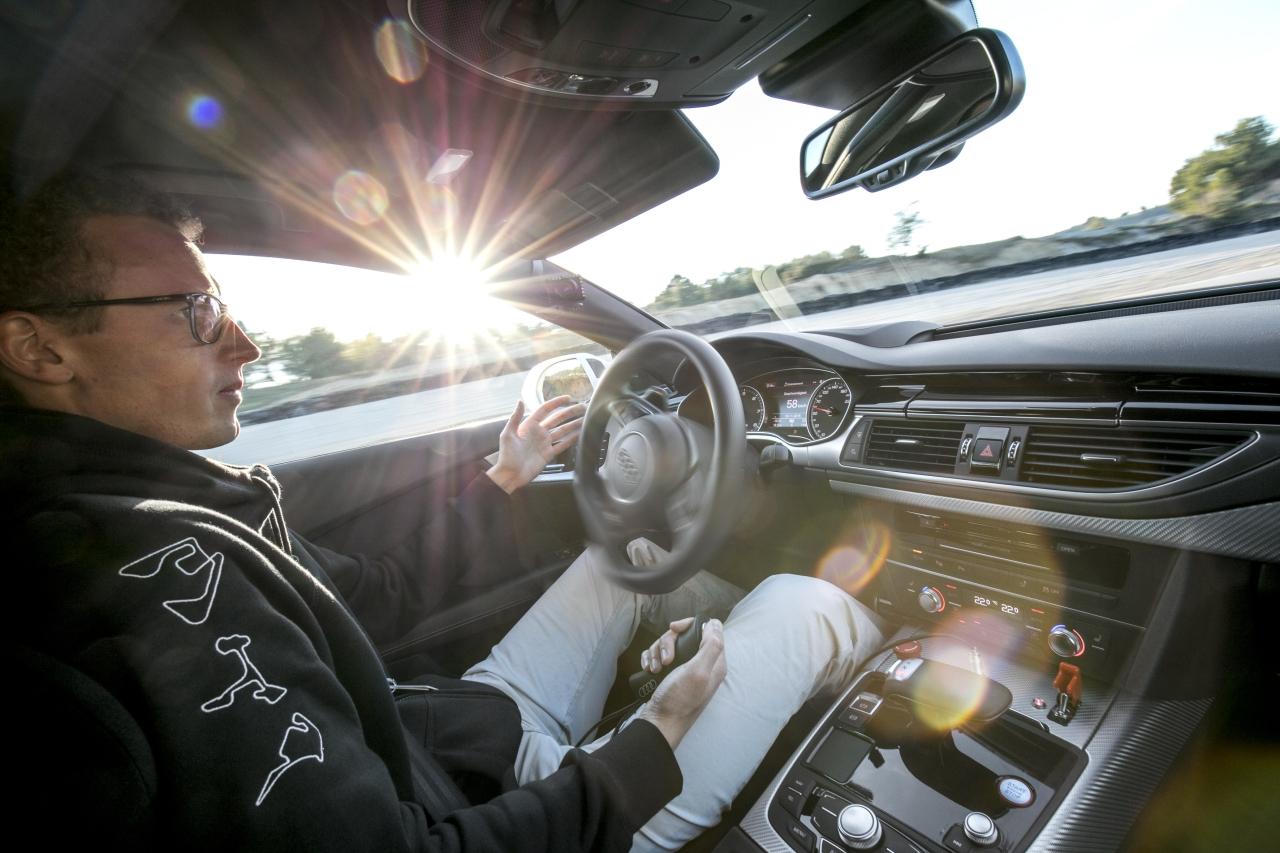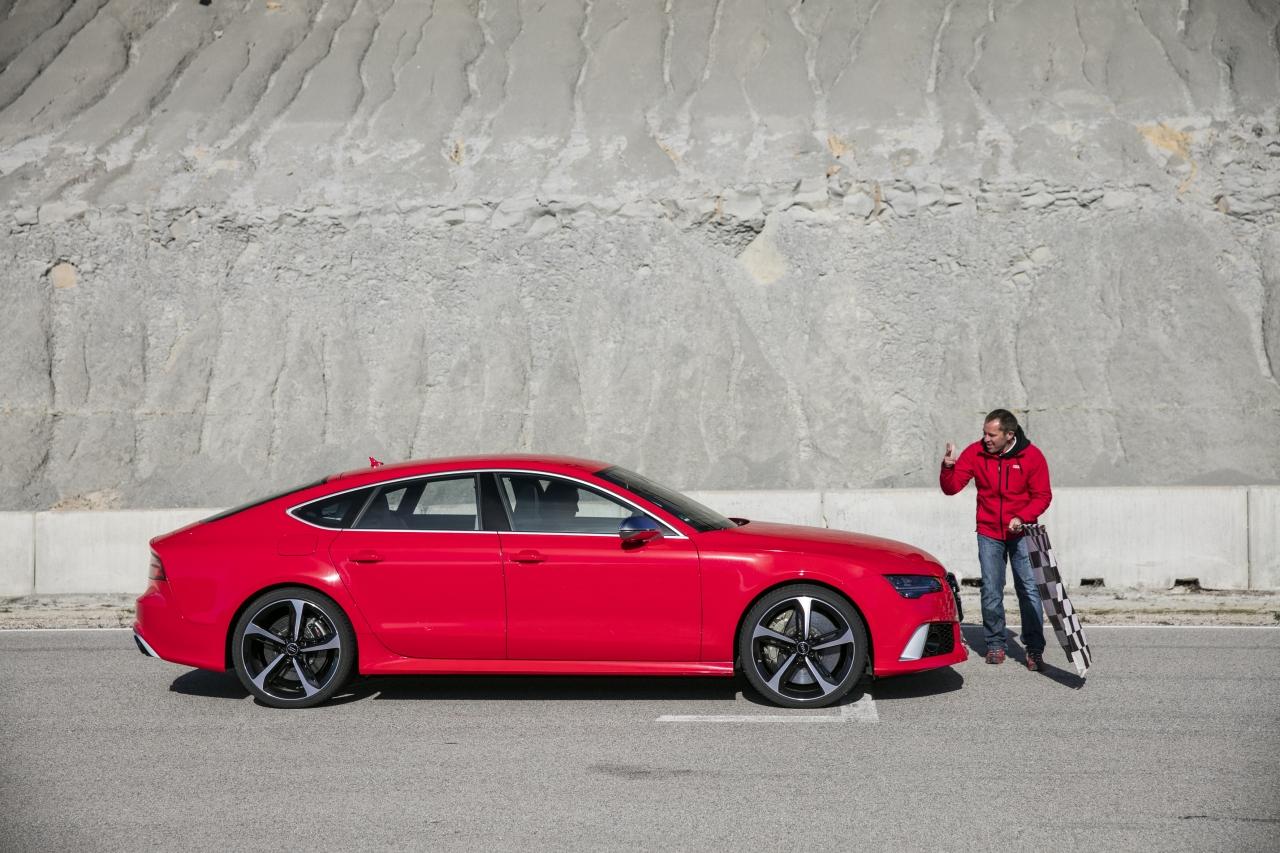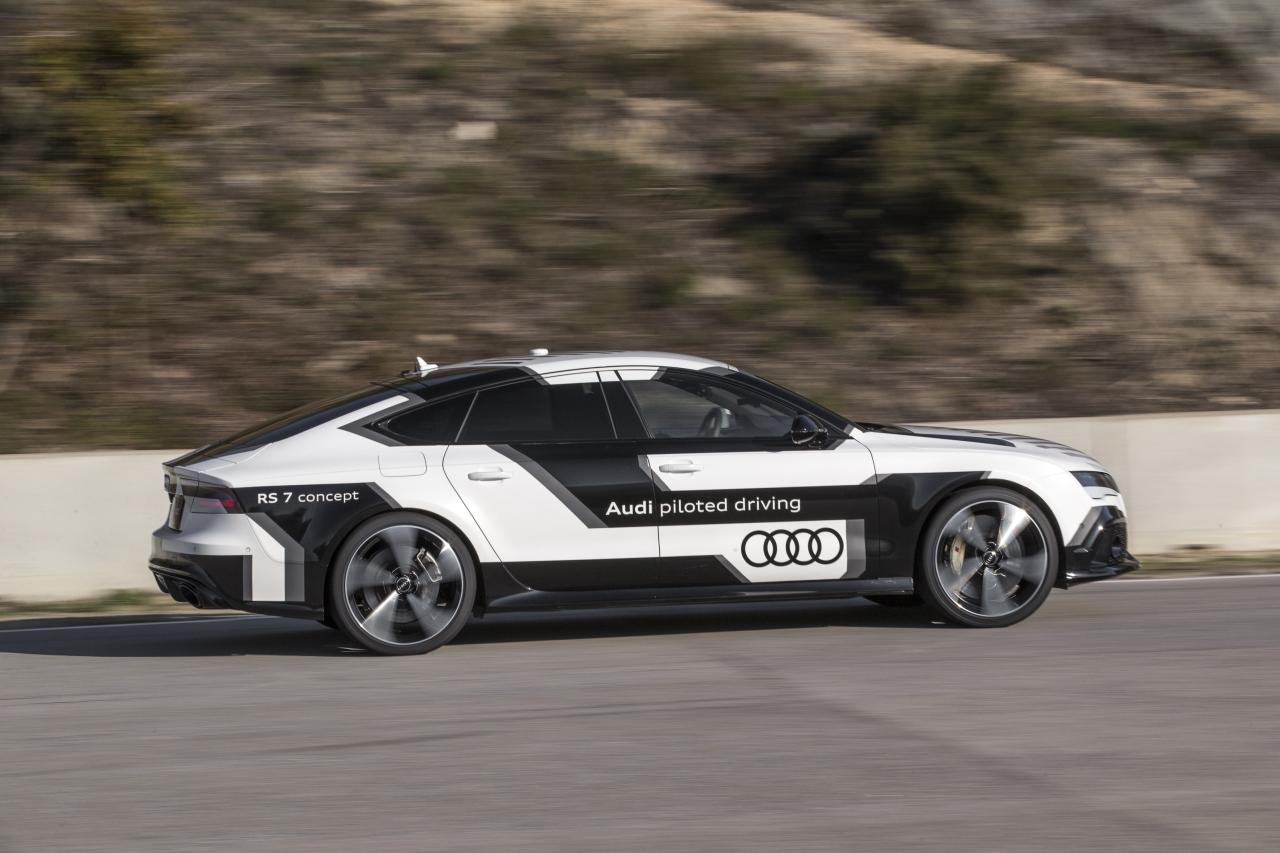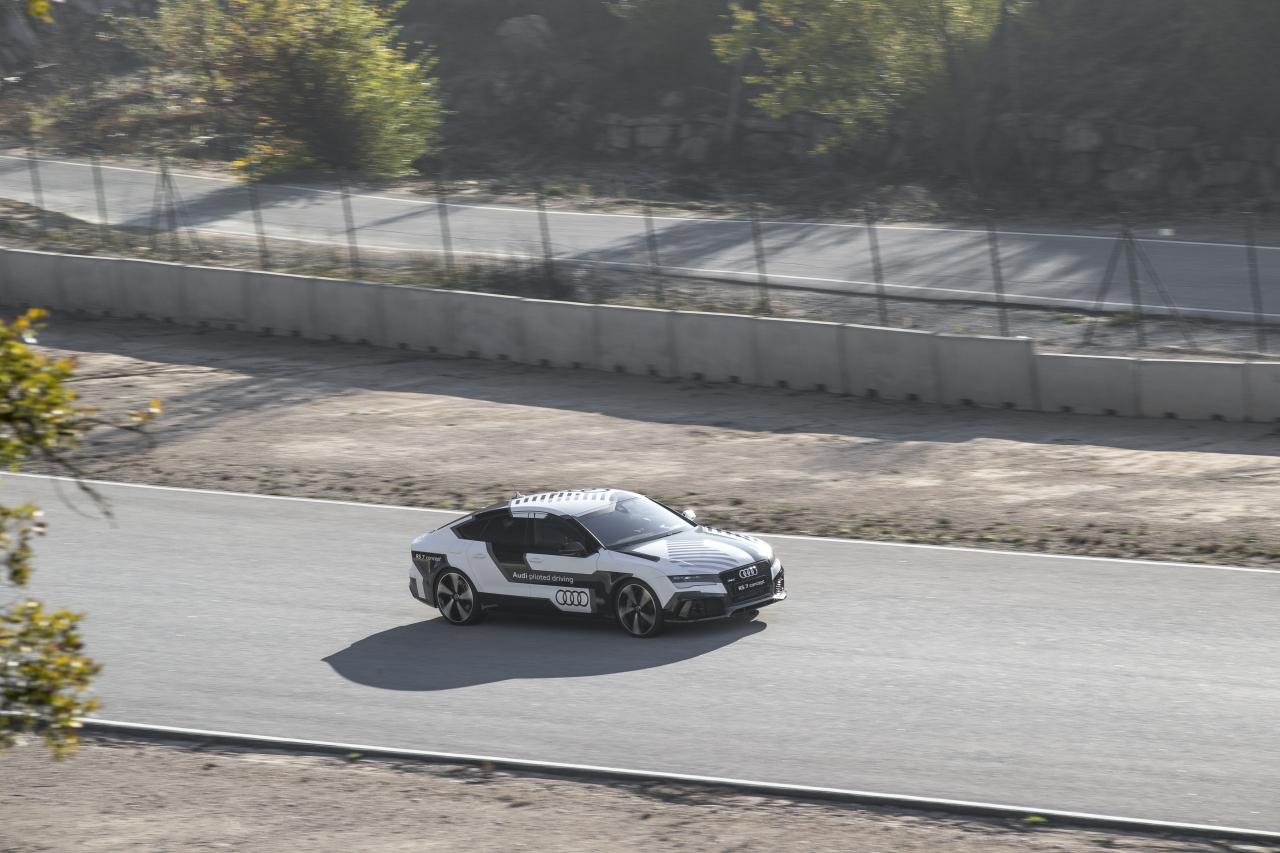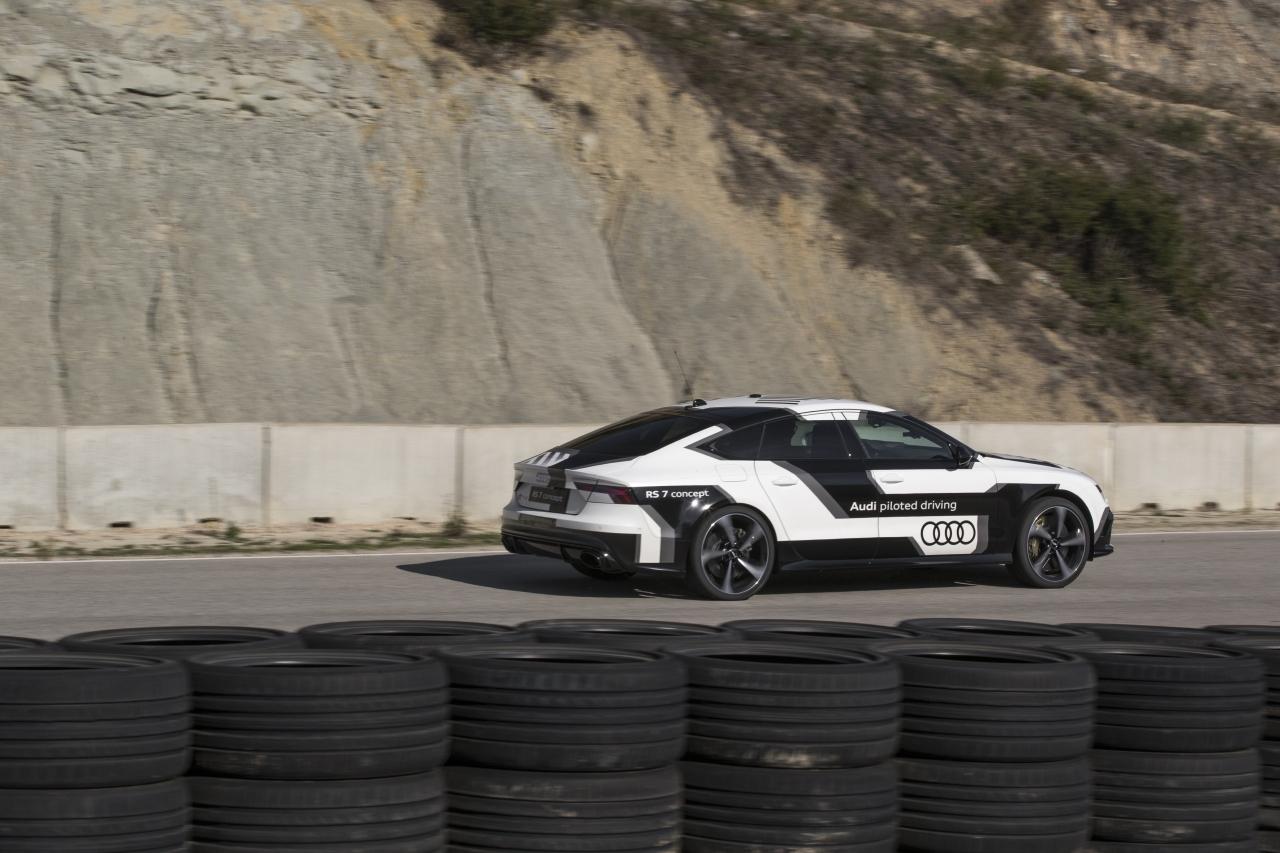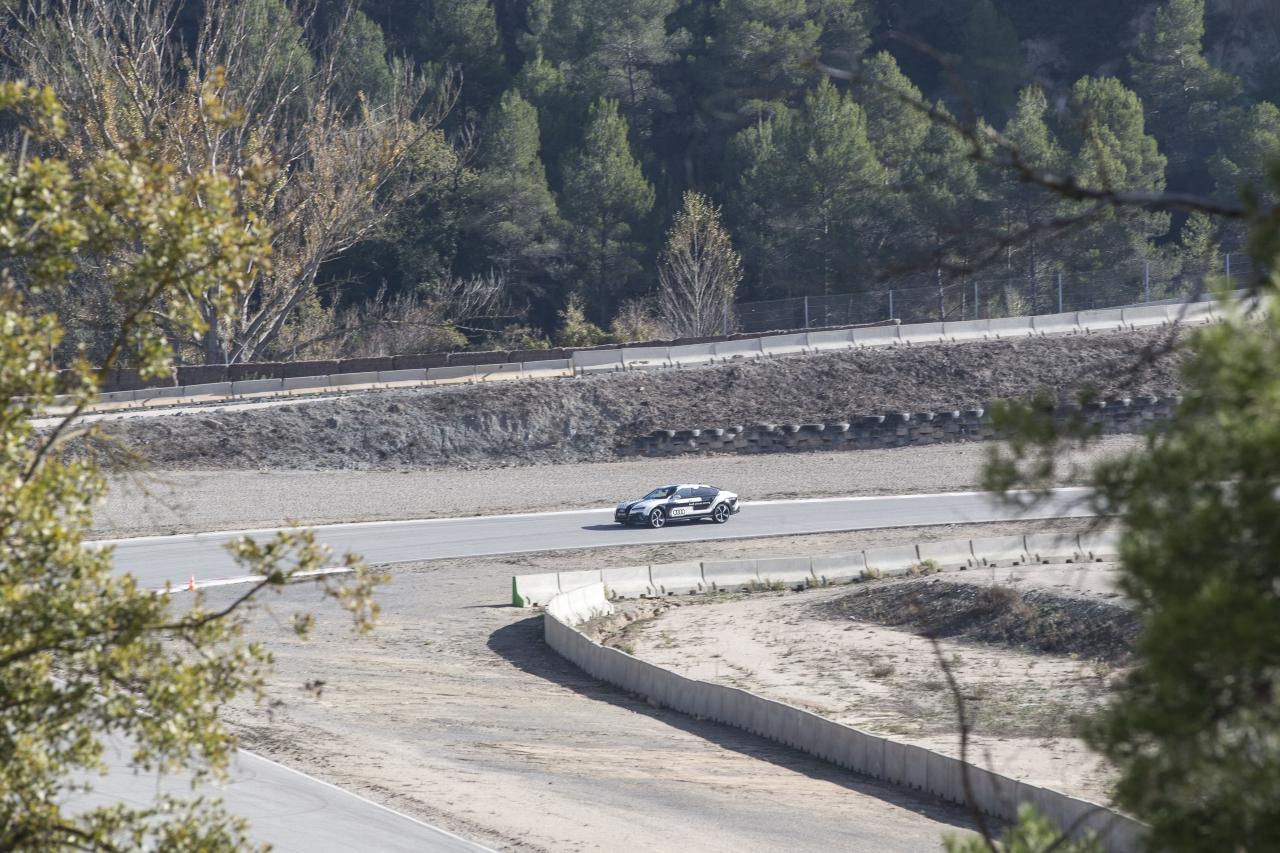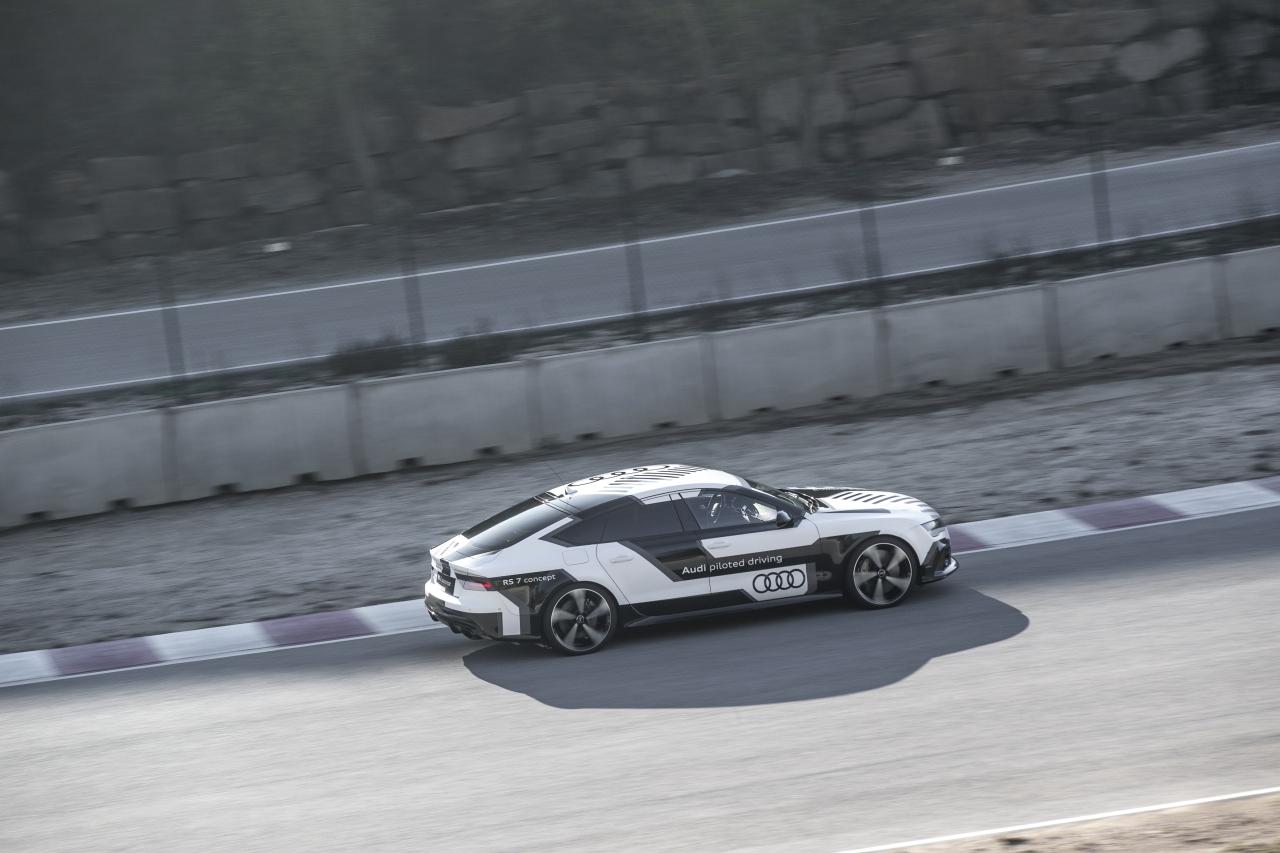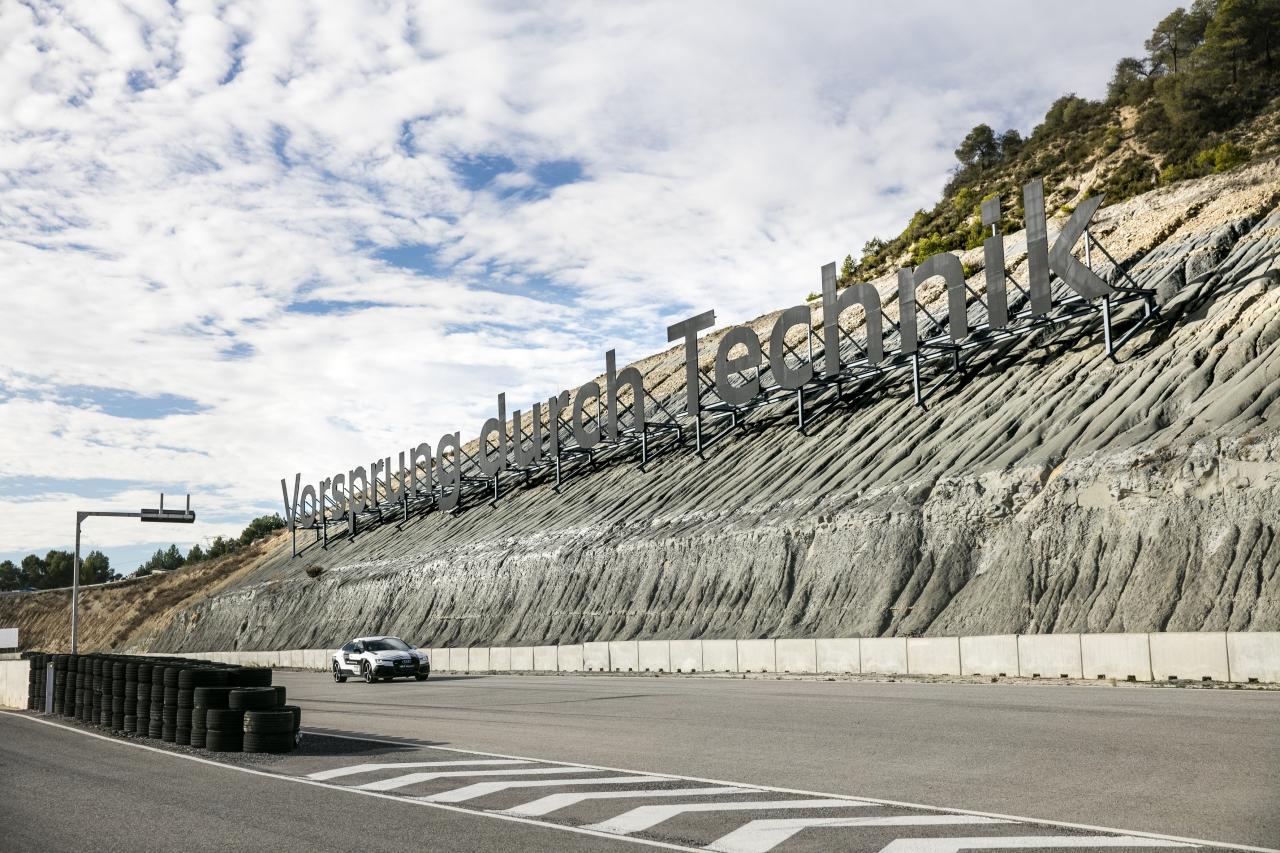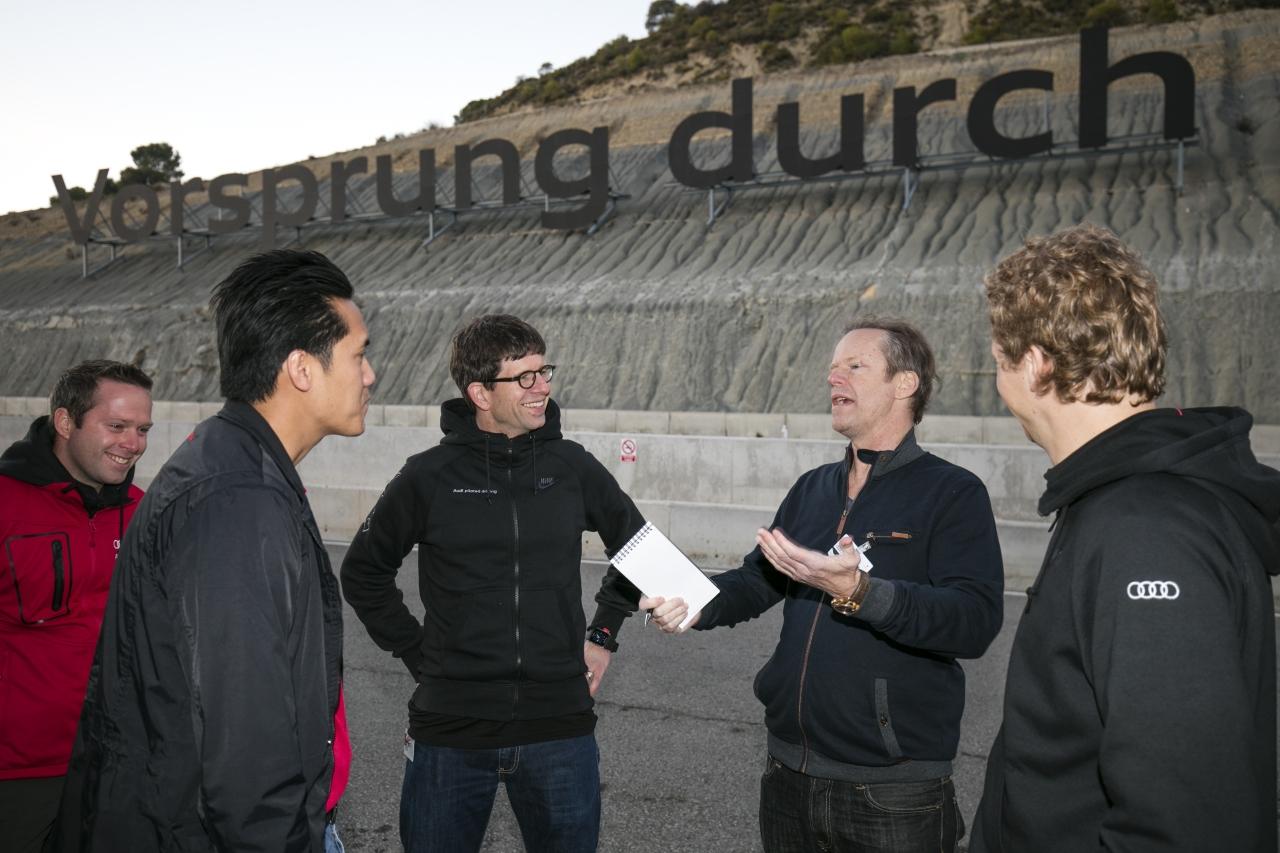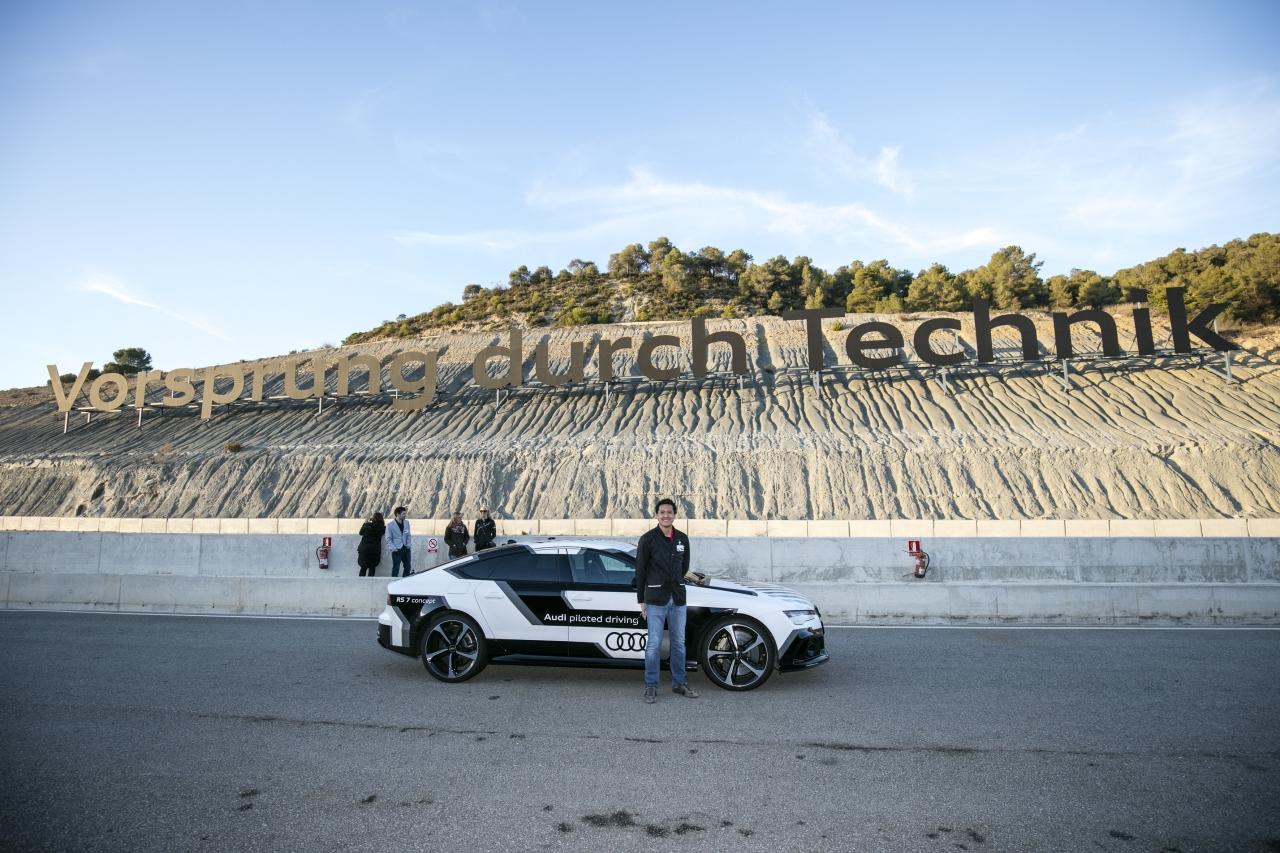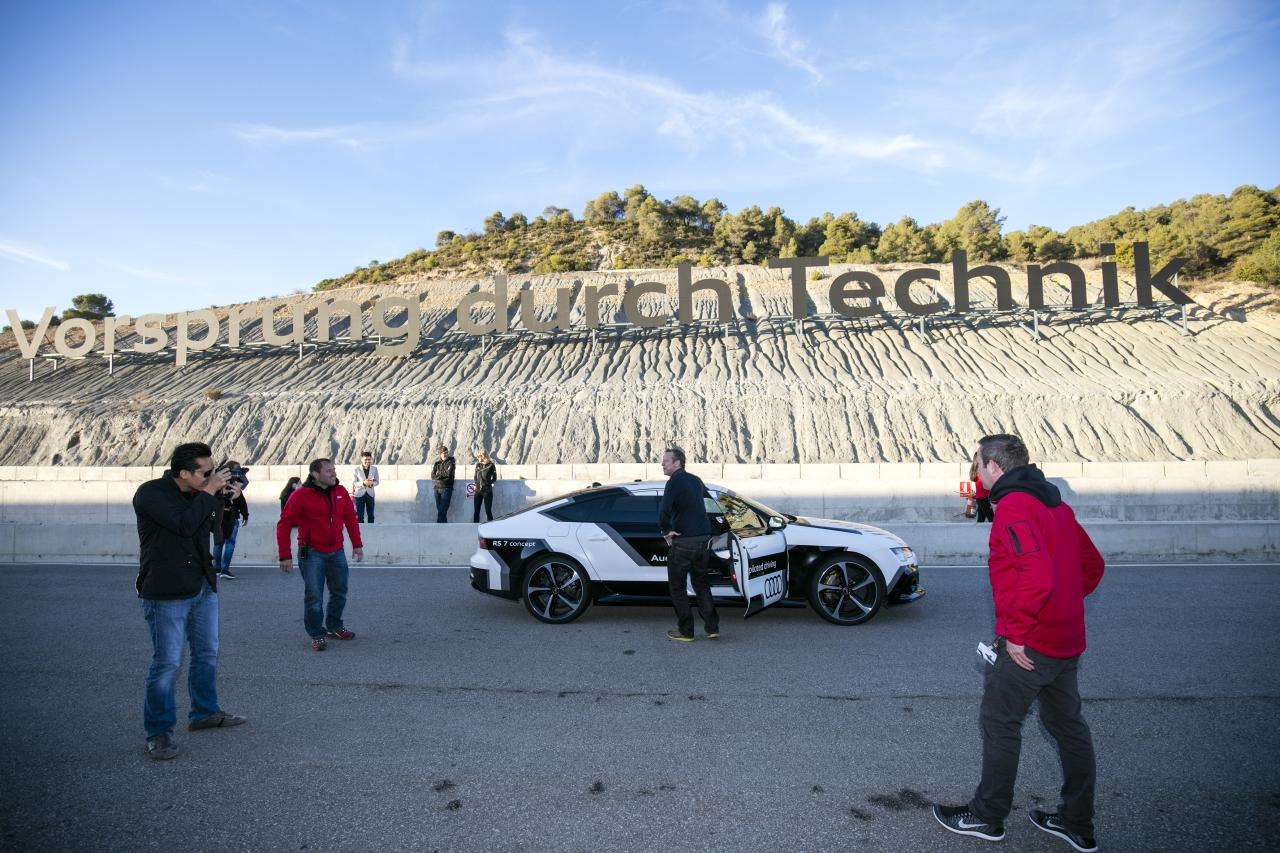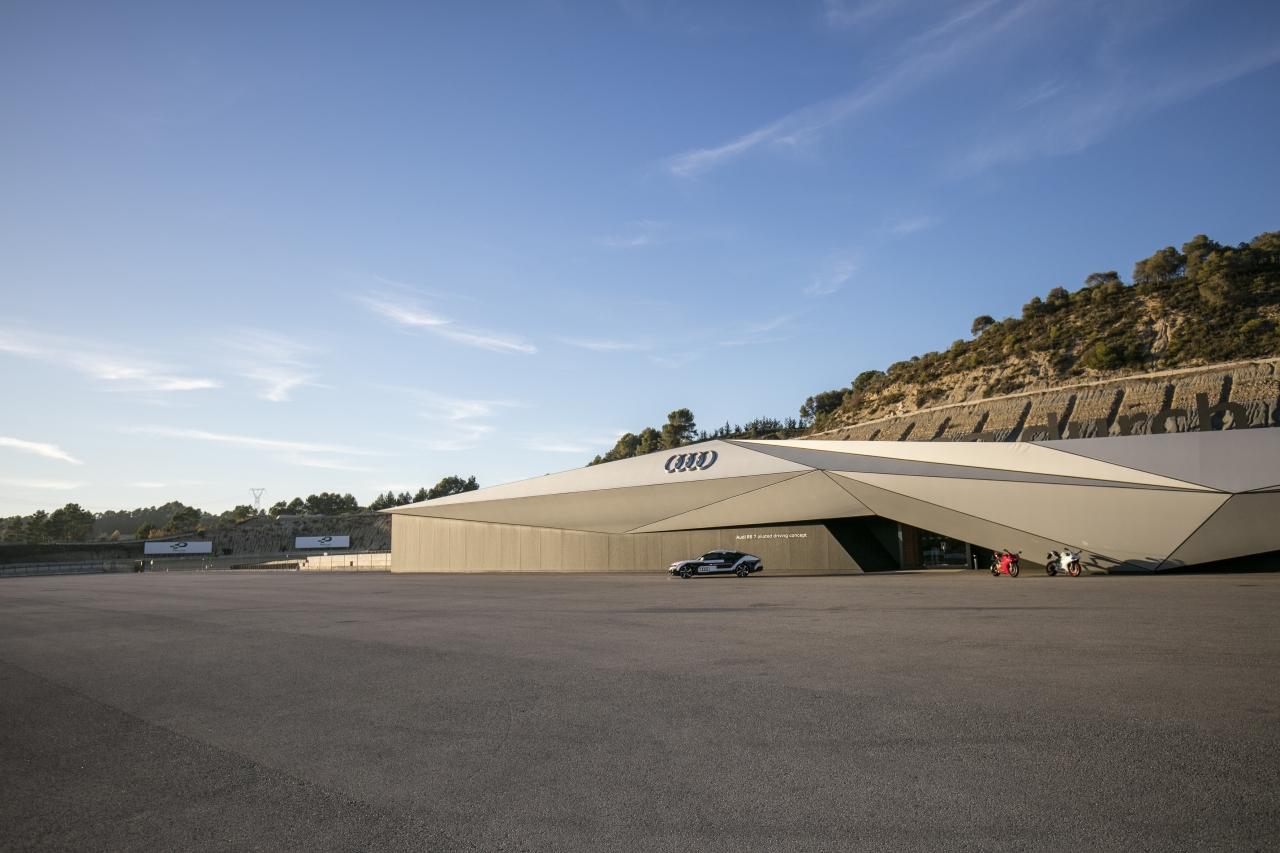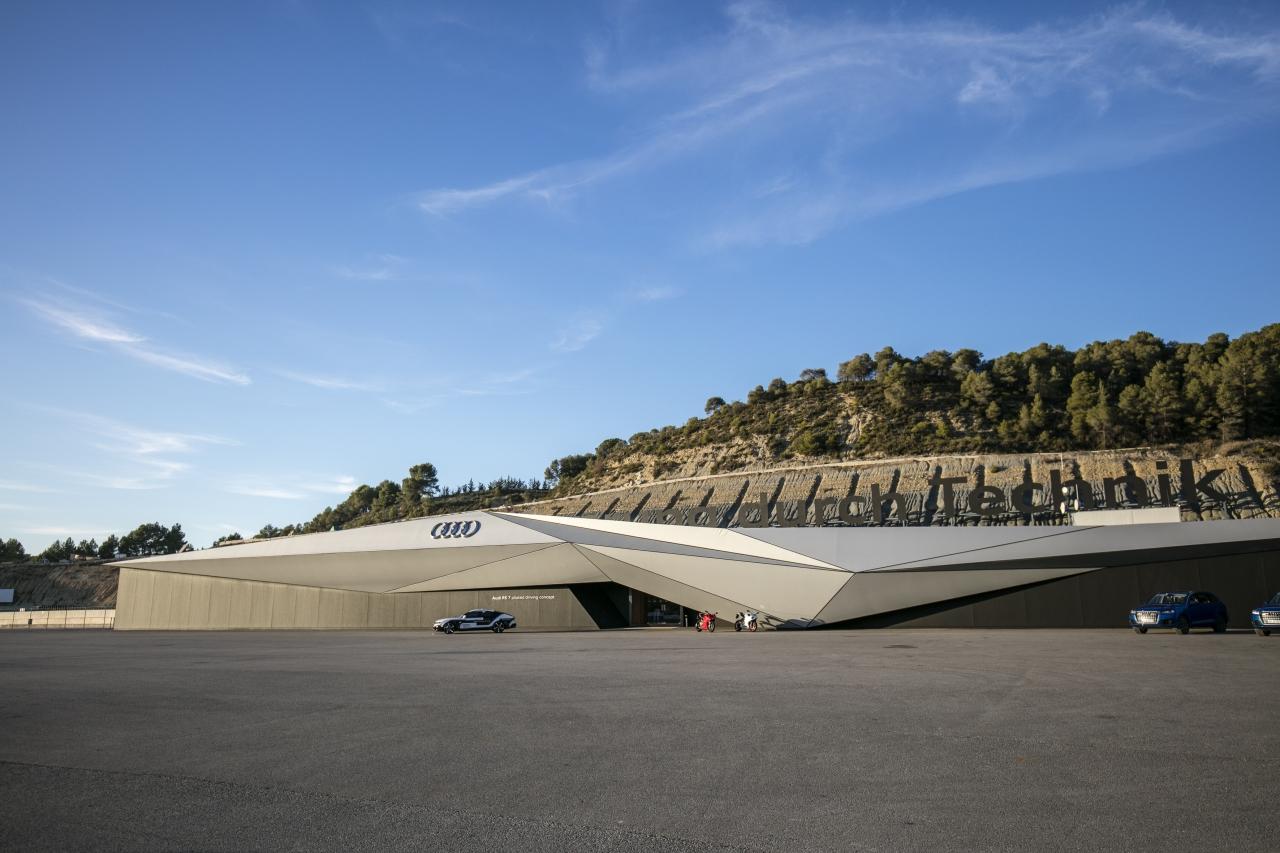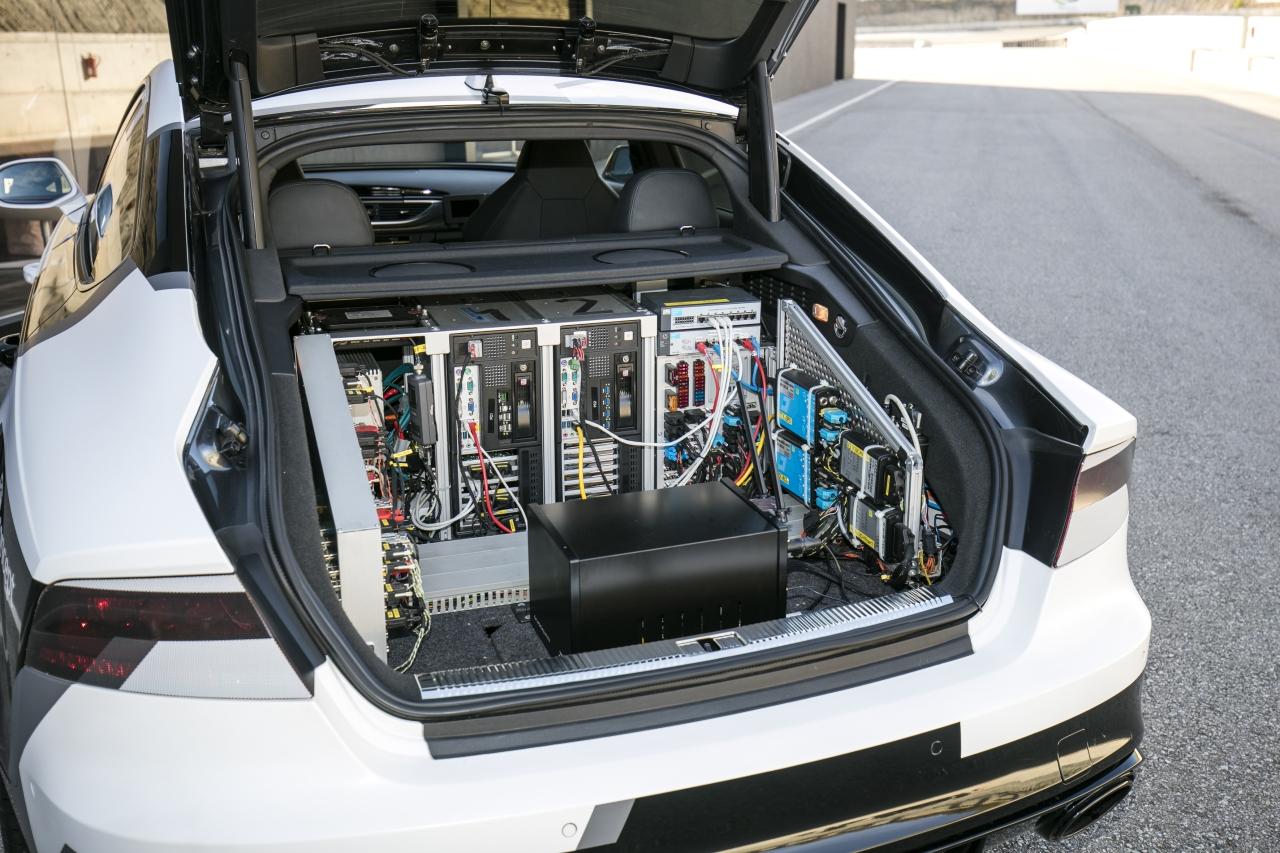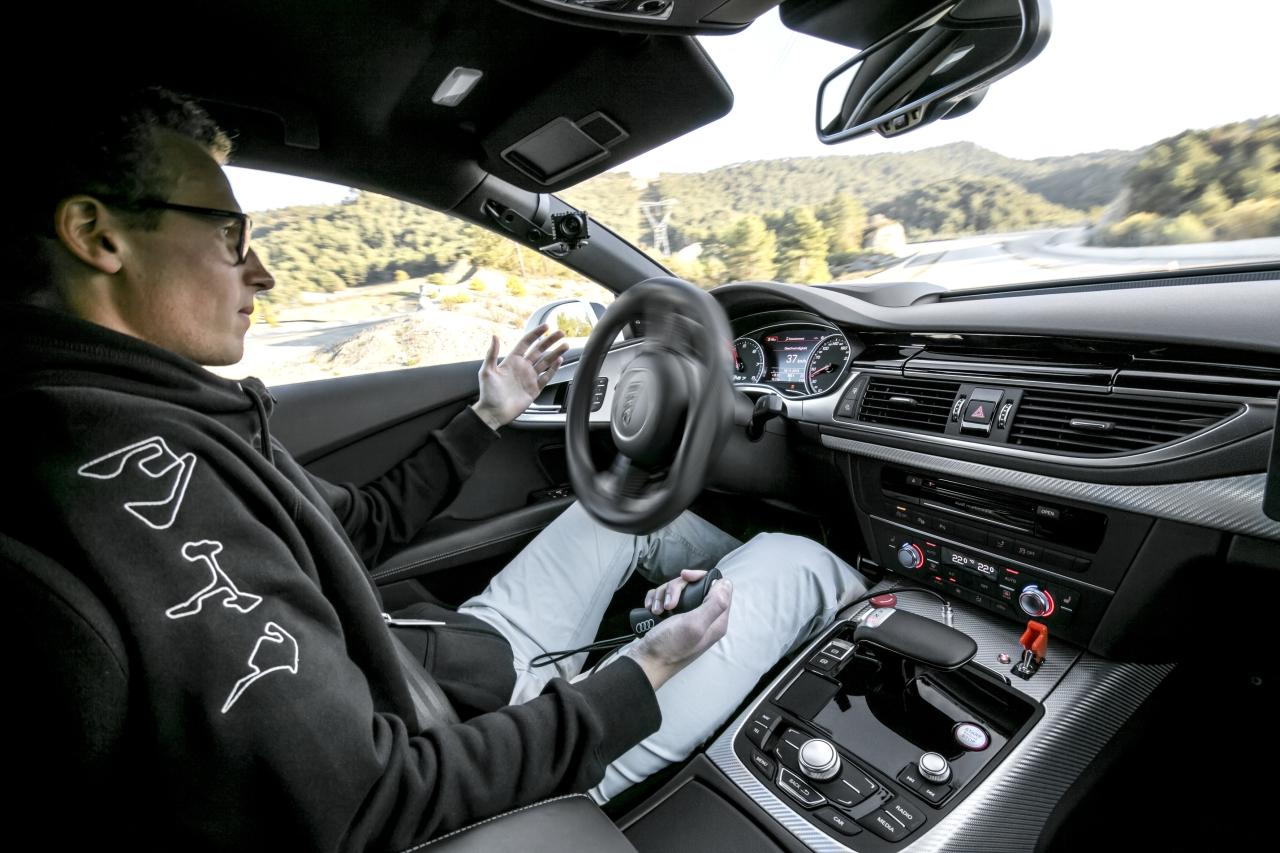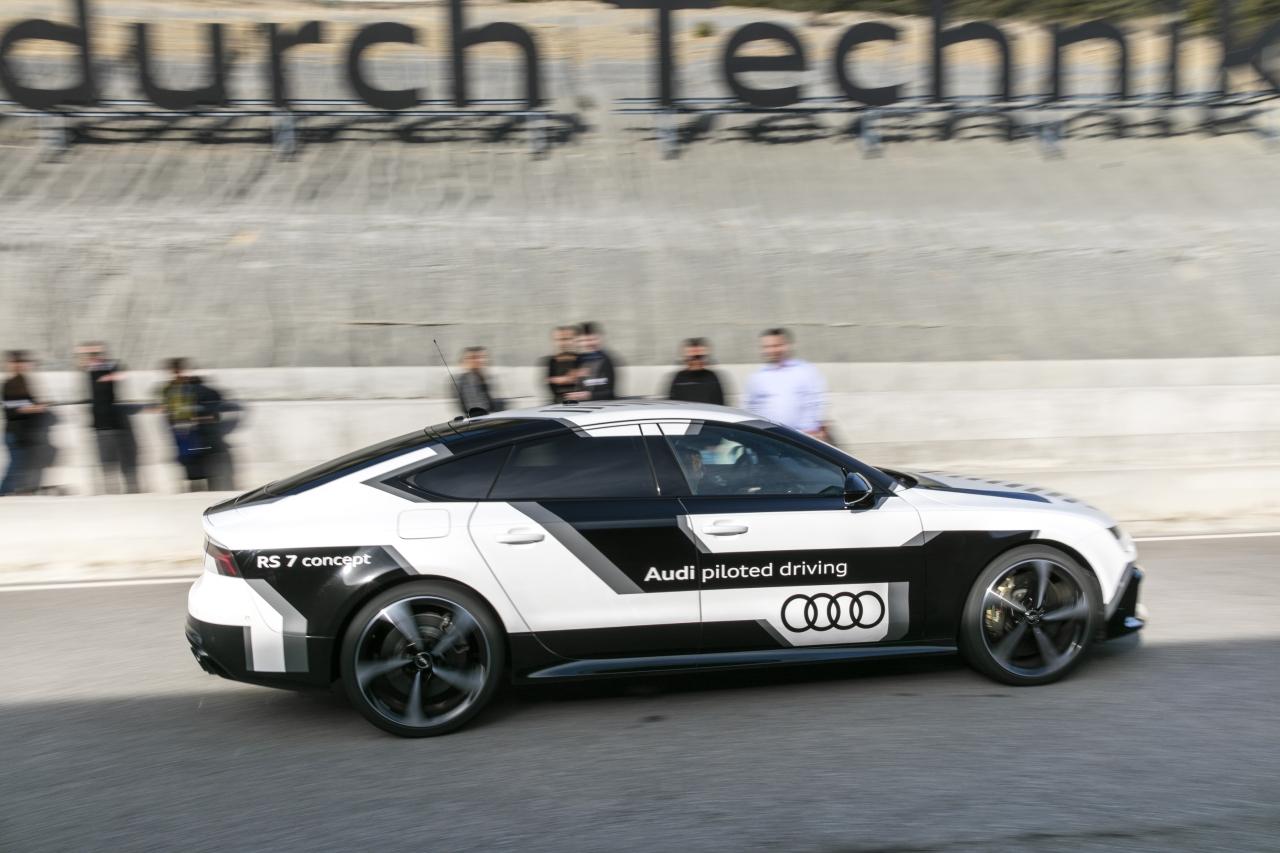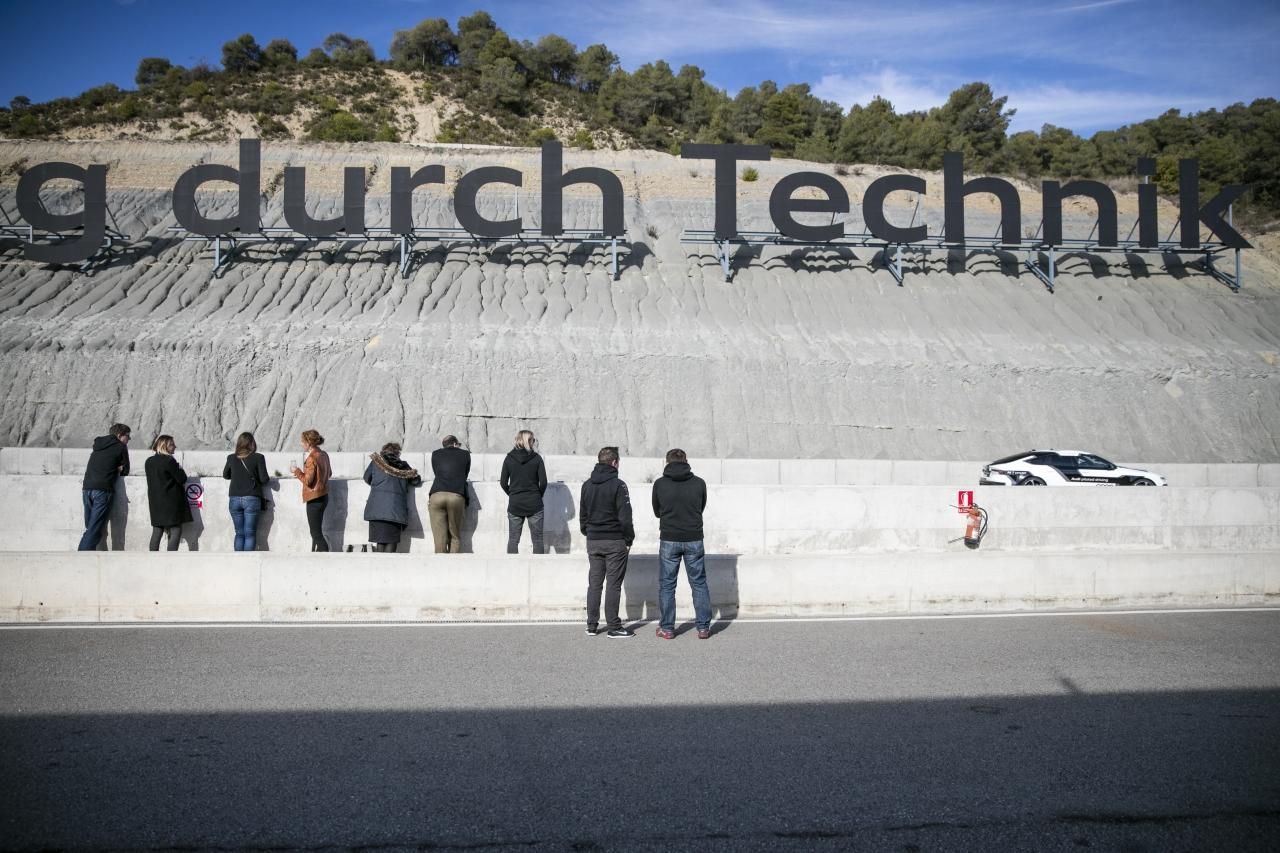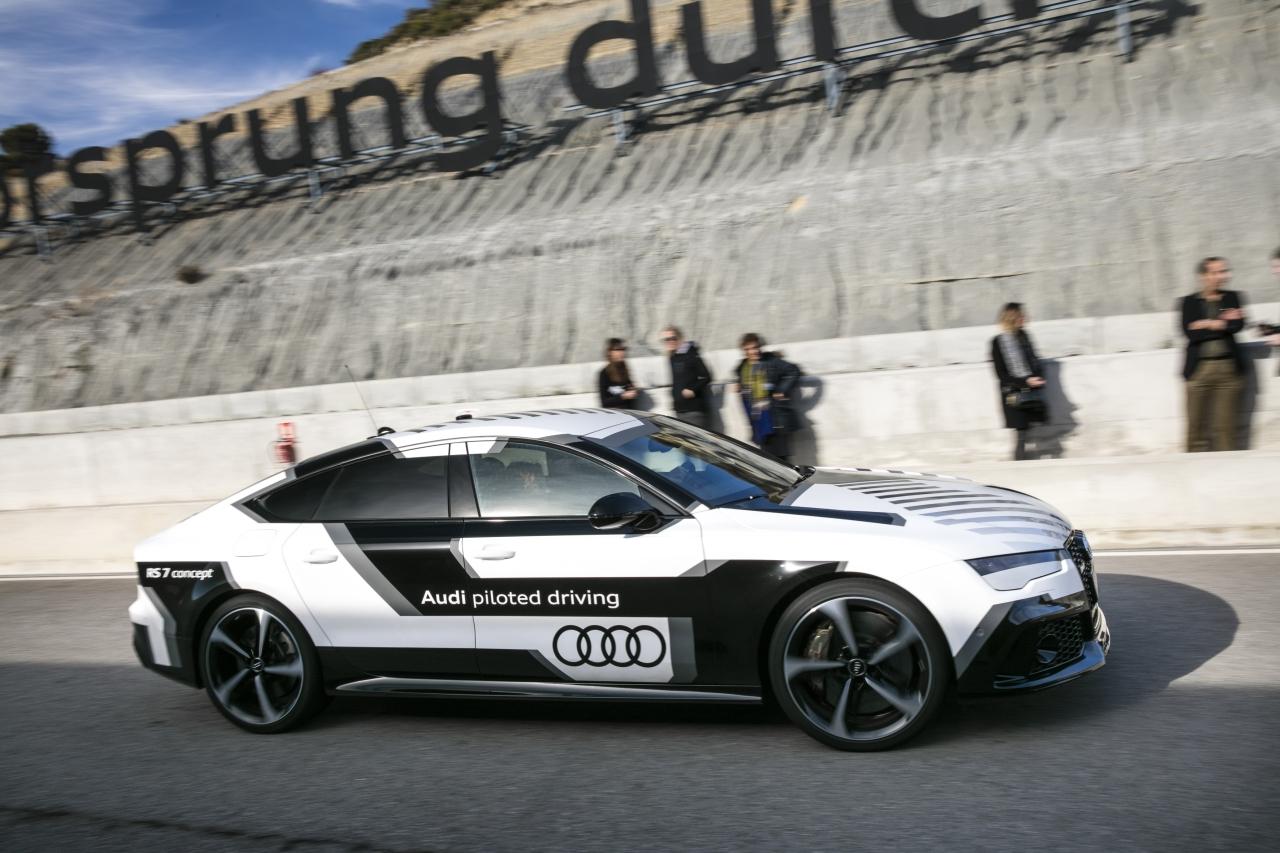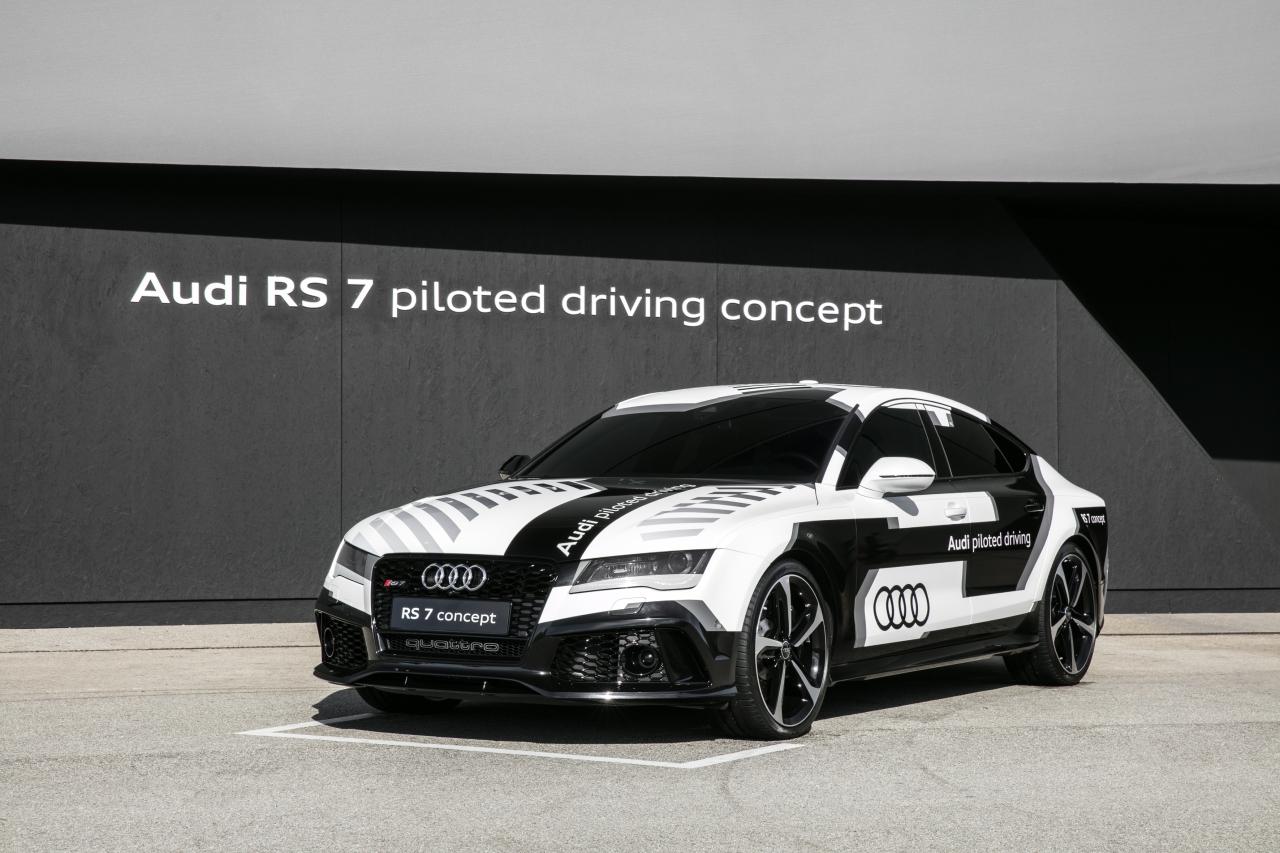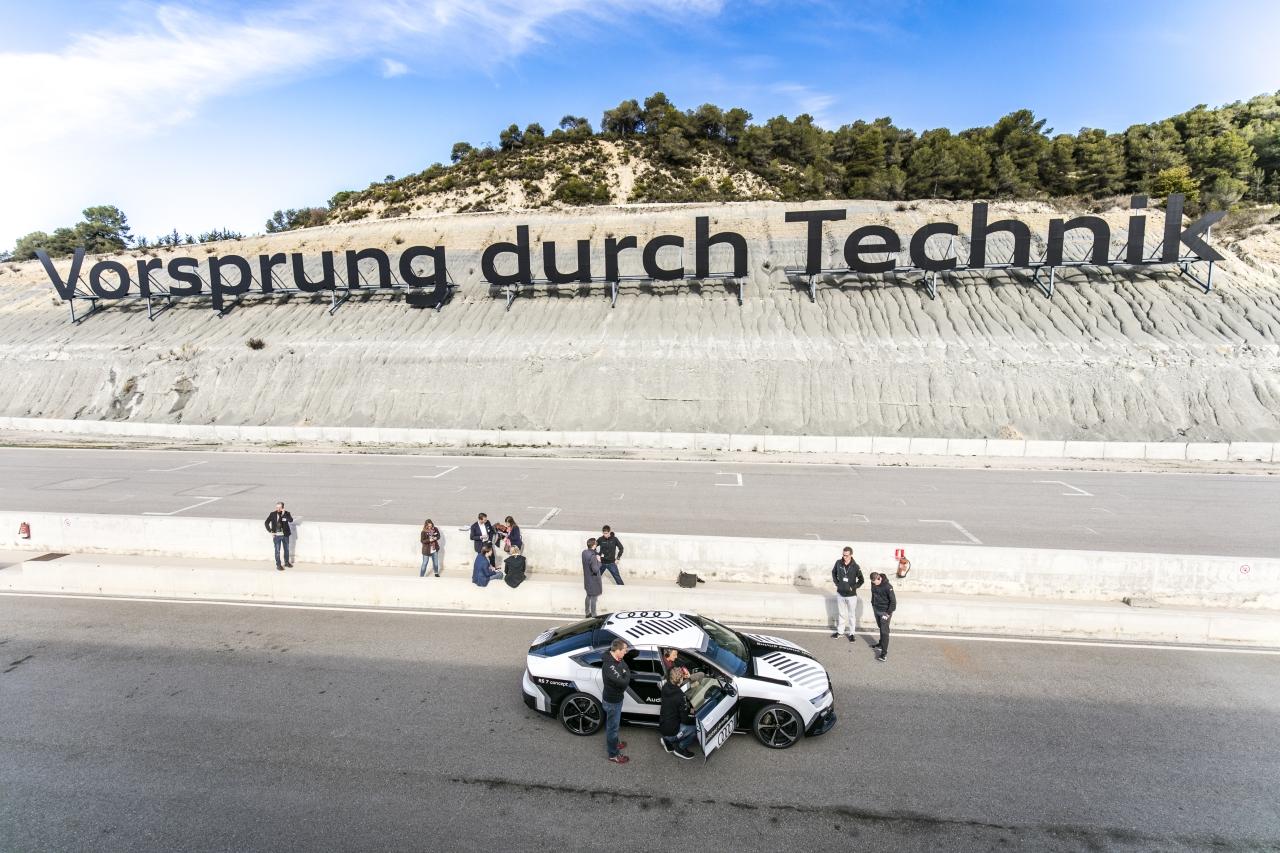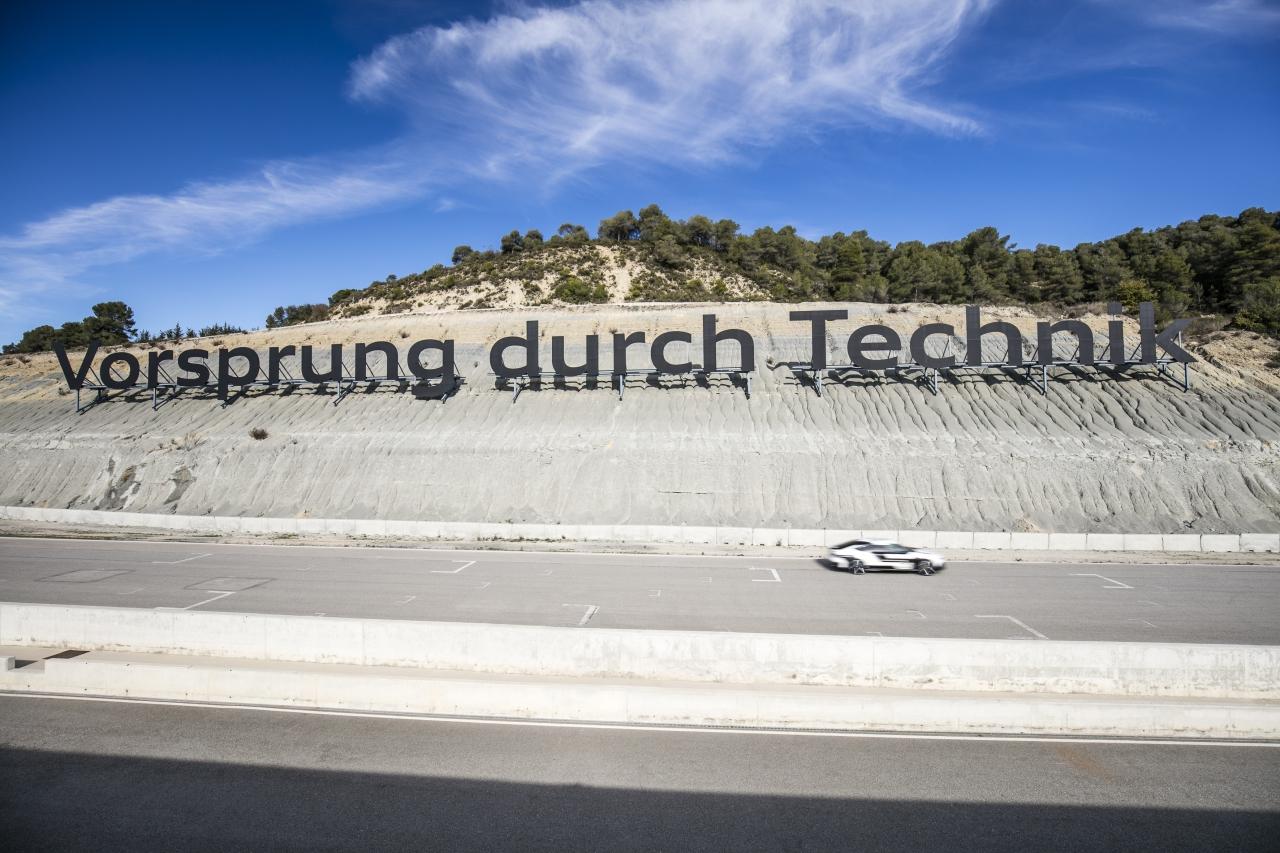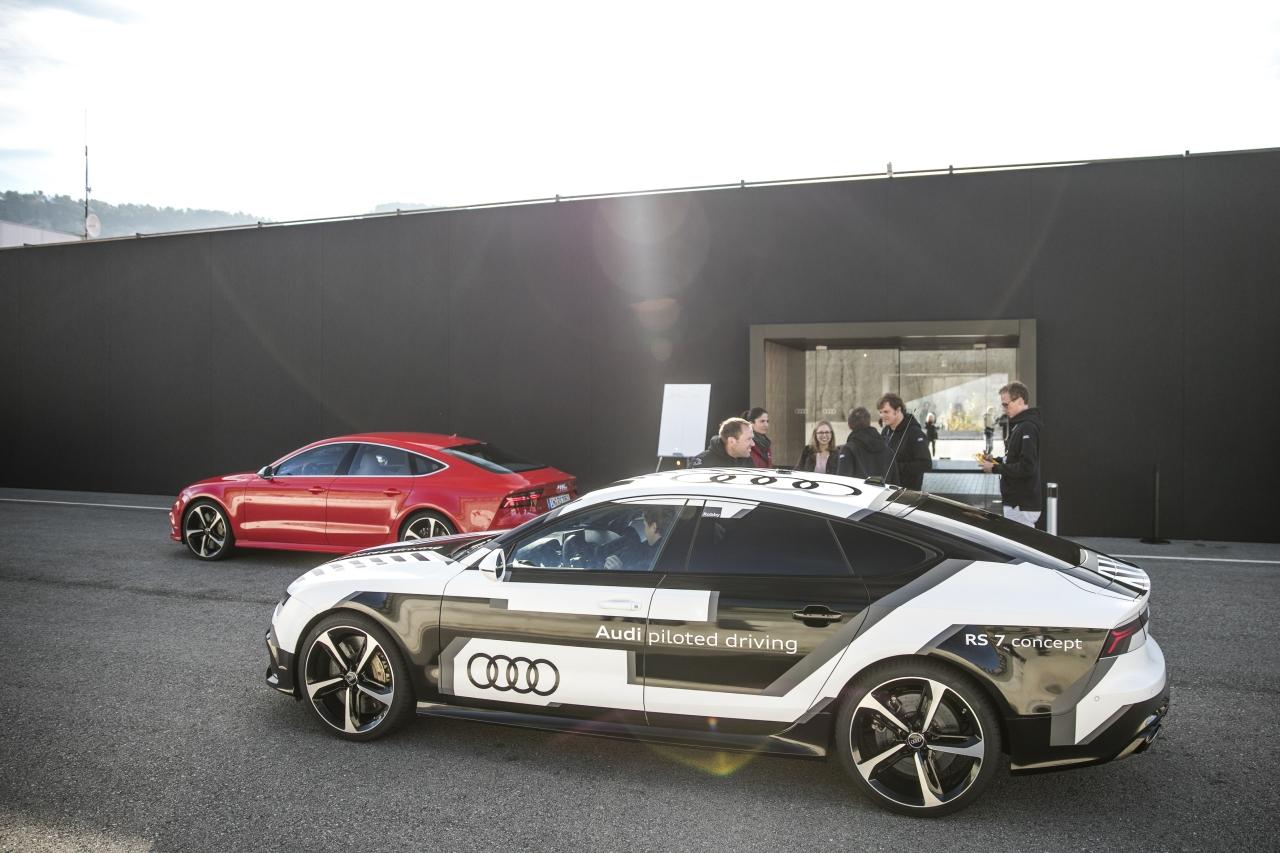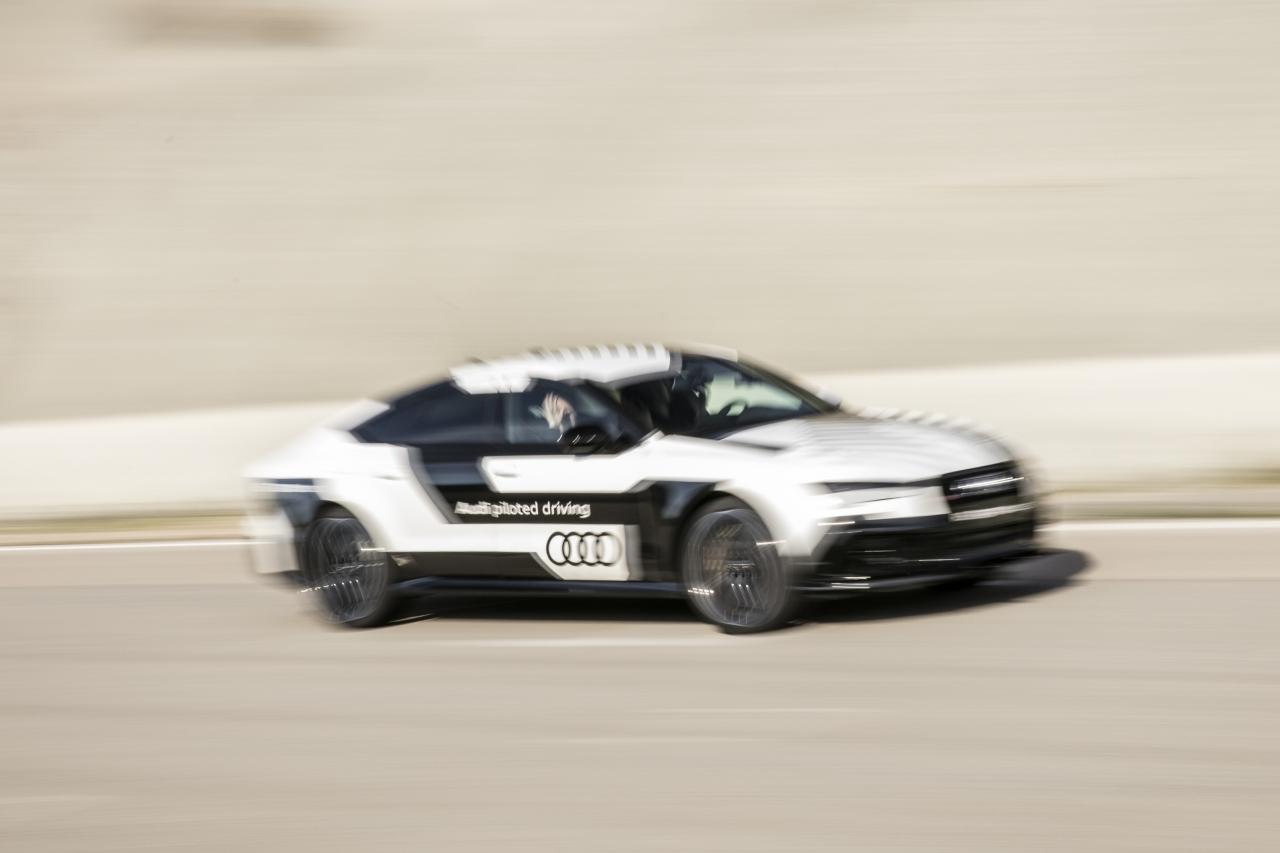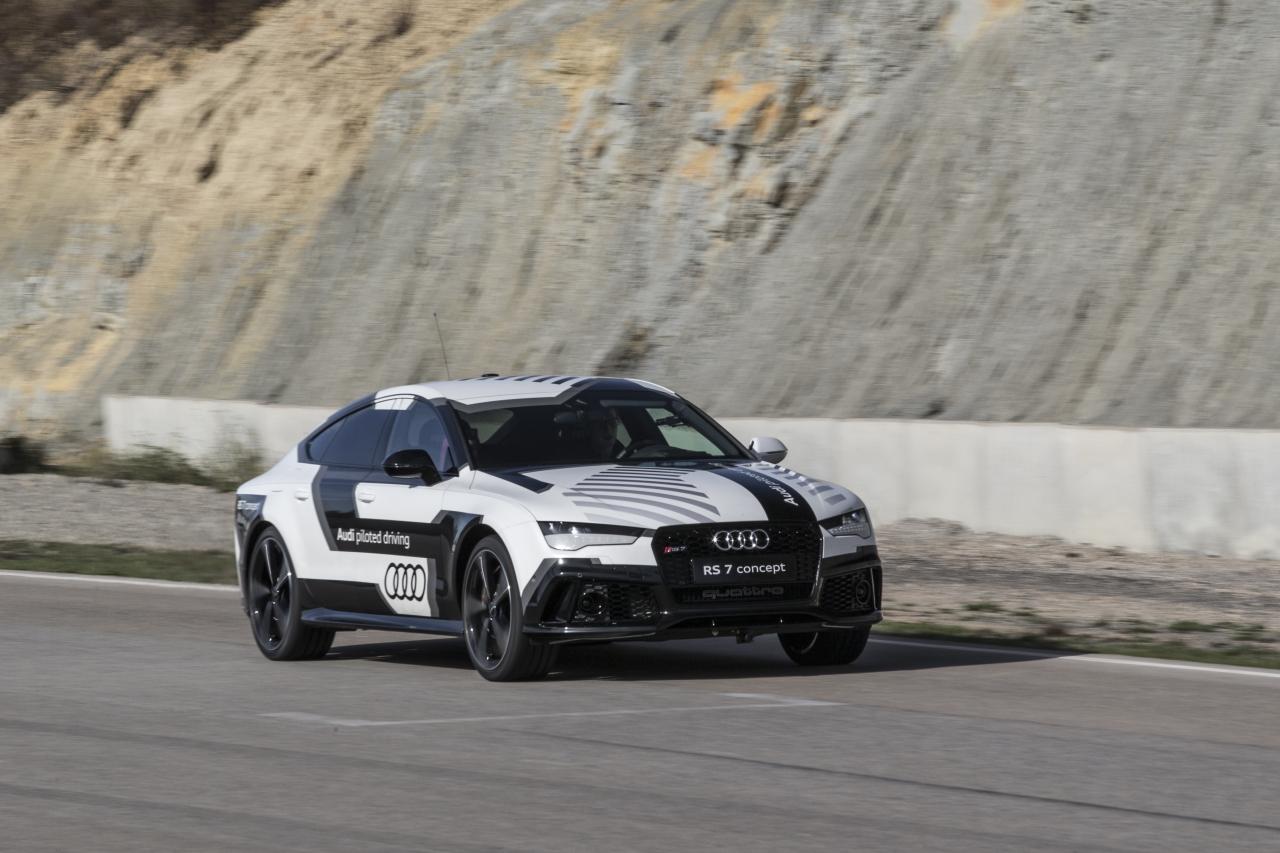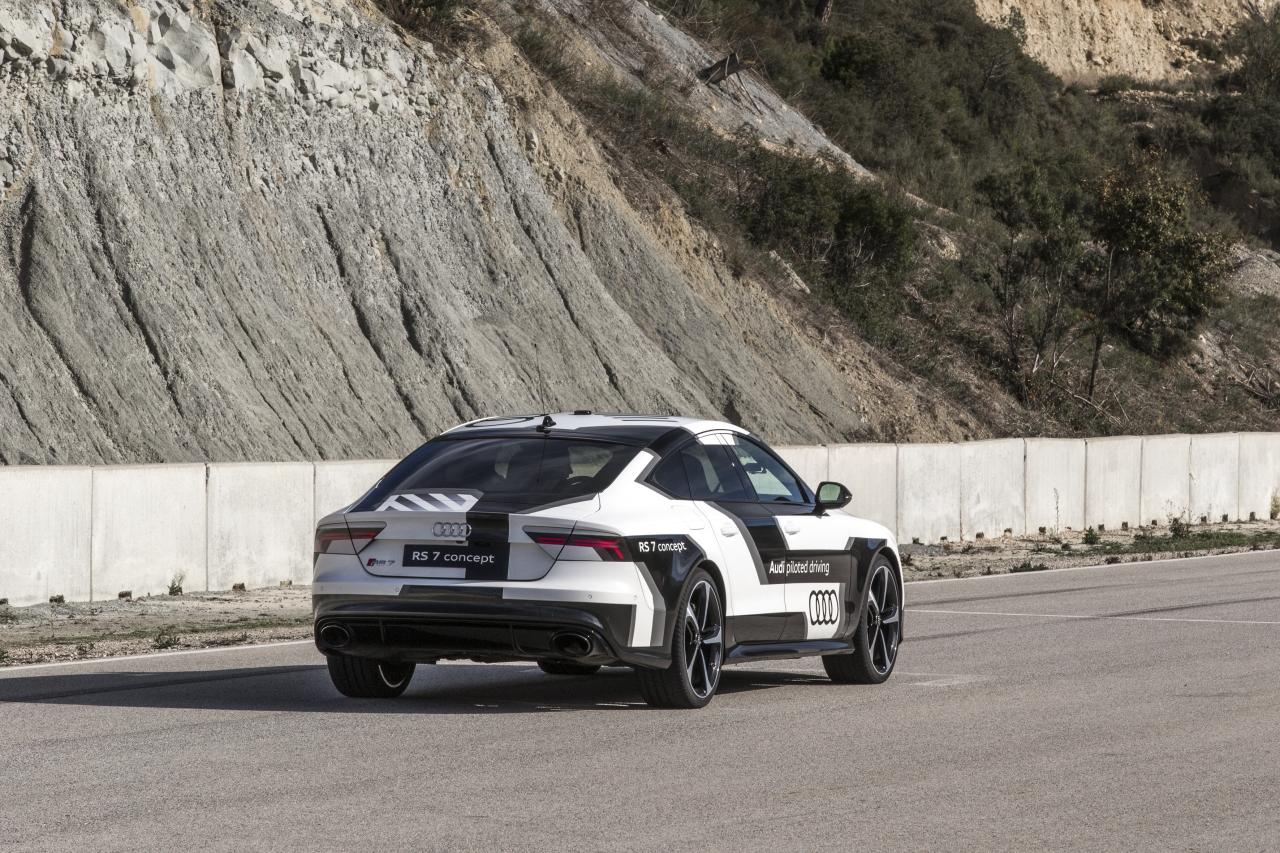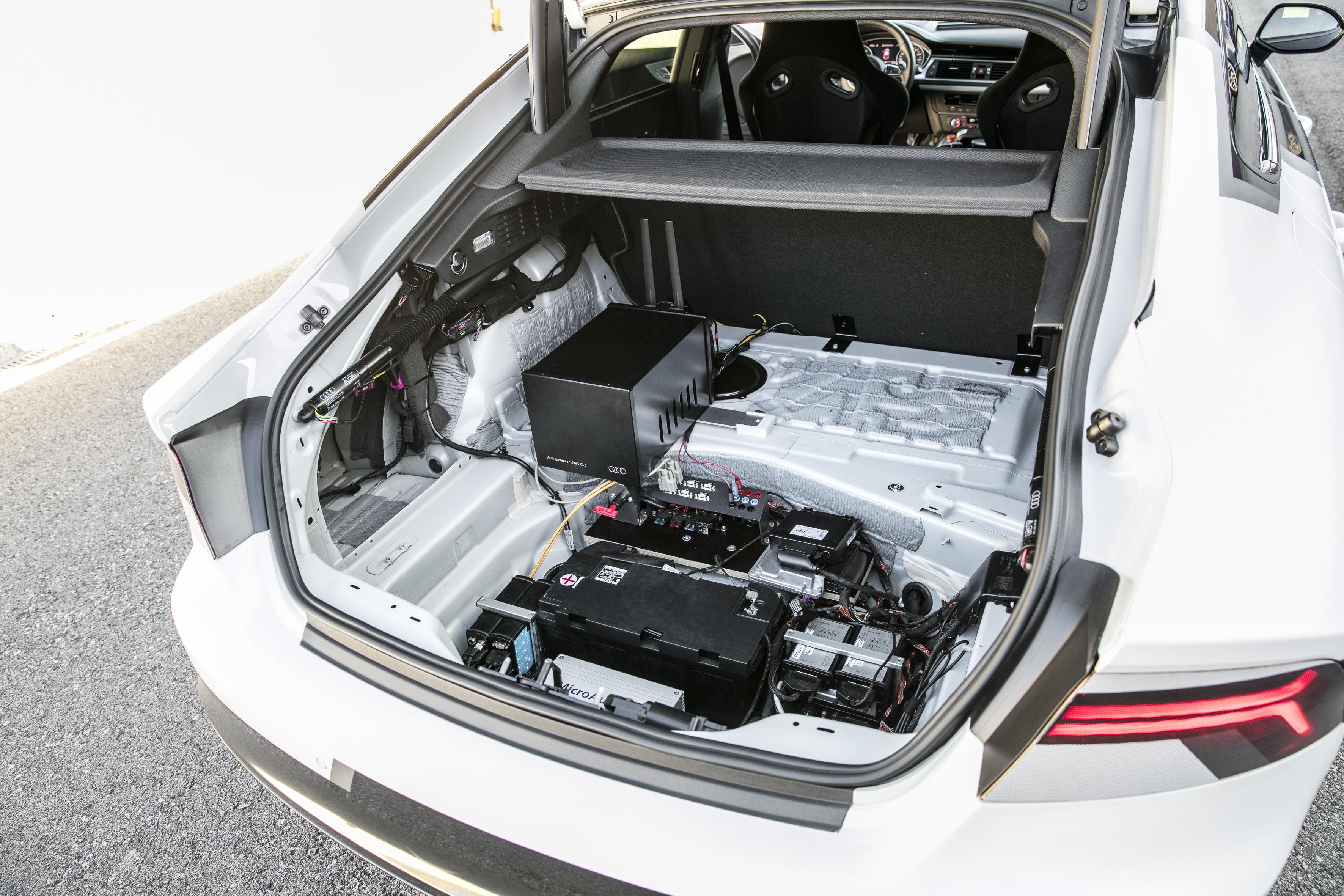Man vs Machine: My rematch against Audi's new self-driving RS 7
Last year, I beat Audi's autonomous race car on the track. Robots might not have feelings, but that didn't stop Audi's engineers calling me back for a re-match with the latest, greatest version of the self-driving RS7s. AJ, Bobby, Jack, and now Robby all have two things in common: first, they're named after famous race car drivers, and second, they've successfully driven autonomously on racetracks, on the autobahn, and on a cross country trip.
Brief history
In October of 2014, I had my first meet-and-greet with AJ and Bobby at Motorsport Arena Oschersleben. The showdown took place just days prior to Bobby successfully completing a lap on the Grand Prix track in Hockenheimring, at racing speed but without a human driver. It was no show lap, either: with high precision and lane accuracy to within centimeters, the RS7 managed it in less than two minutes.
To accomplish this, Audi equipped Bobby with GPS data transmitted to the vehicle via WiFi as well as 3D cameras, the latter taking copious shots of the track so that onboard computers running homegrown software could compare the real-time imagery against a data set of "perfect" positioning. AJ and Bobby are both equipped with this system.
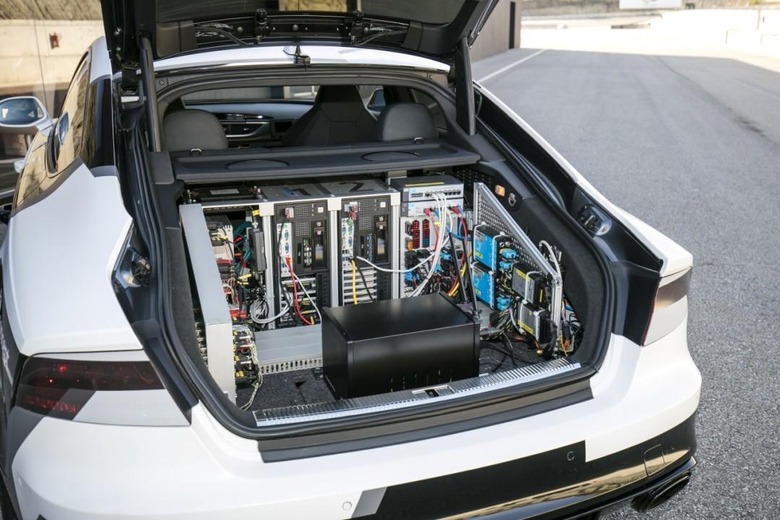
Fast forward to a few months later, and Audi sent AJ and Bobby's brother Jack on a road trip from Silicon Valley, California to Las Vegas, Nevada to attend CES 2015. Jack's A7 piloted concept car was outfitted with Audi's most advanced safety features, and he took along a few lucky journalists for a drive-free experience from 0 to 70 mph.
Whereas the RS7 twins are intended to track use, Jack is able to autonomously initiate lane changes, pass other vehicles, and speed up and slow down when necessary. A number of sensors – many of which are in production cars like the new Q7 and A4 – including long-range radar for the adaptive cruise control (ACC) and Audi Side assist (ASA) act as eyes on both the front and rear of the car.
A pair of mid-range radar sensors located in the front and rear aim to the right and left, rounding out the 360-degree view. To be on the safe side Audi also fitted the A7 with laser scanners as a redundant system, providing detailed recognition of static and moving objects during piloted driving. For good measure, the engineers also threw in a 3D video camera, four small front and rear mounted cameras, and upgraded navigation data for vehicle orientation.
Present day
Now take all of the aforementioned tech and toss it out the window. Well, almost everything: as far as weight goes, Audi tried to get Robby's heft down as close to the production model as possible. In order to do that, they ripped out Robby's redundant systems such as the set of stereoscopic cameras and the secondary brake booster controls, as well as all the extra computing hardware in the trunk. For safety, as you can see in the video, there's now a trained Audi driver behind the wheel, holding a controller with his thumb firmly pressing a dead-man's switch. The moment something goes south, releasing the button also releases control to the driver.
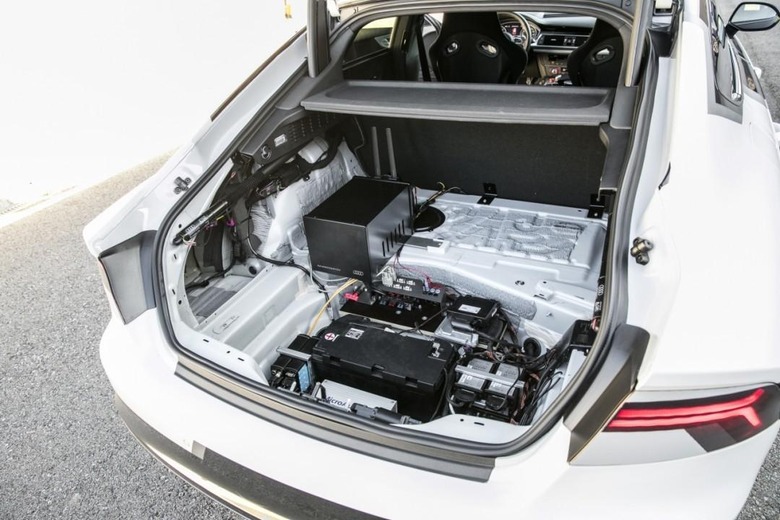
Robby's primary mission post-upgrade is performance and driving dynamics. It's number one task is to autonomously drive as rapidly as inhumanly possible around FAST Parcmotor race track's 2.6-mile long course. Prior to my arrival – and I wish I'd known this, since I would have raised my game and driven a little faster myself – it scored a best lap time of 2:07.67 minutes. It's also possible Robby ran the lap solo without anyone inside and as result, the car is lighter minus two grown adults.
The day I raced against Robby, his performance must've been dialed down slightly for our safety because he finished the lap time 2 seconds slower at 2:09.237. Unlike a professional human racecar driver, for the most part, Robby's style is much more conservative: no curbing or squealing tires. All in all, as you would expect for a polished Germanic robo-racer, his driving is precise, smooth, and deliberate, while pushing the RS7 safely but speedily around the track.
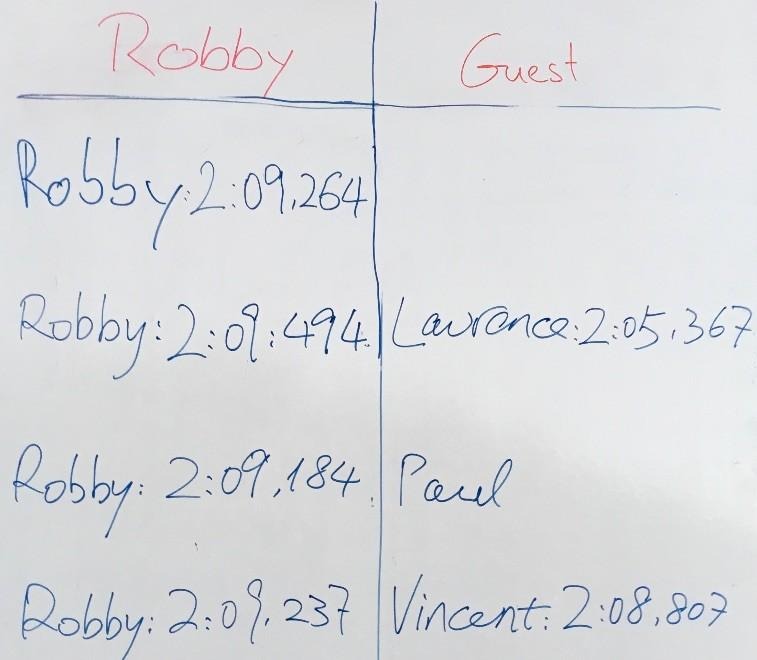
Aside from shedding a not-inconsiderable 881.8 pounds in total weight (bye-bye backseats), Robby now has the capability to always keep the best line through twists and turns, adding up to consistent lap times as you can see from the results. As an amateur driver, I can't say the same for me.
After two laps riding shotgun as Robby's passenger, I get a practice lap and now it's my turn to race against his lap time of 2:09.237 (or should I say 2:07.67 minutes, his actual best lap time). Do I win? Yes, and no. While beating his fastest lap time on the day, Robby's overall best time beat my own 2:08.807 by roughly a second.
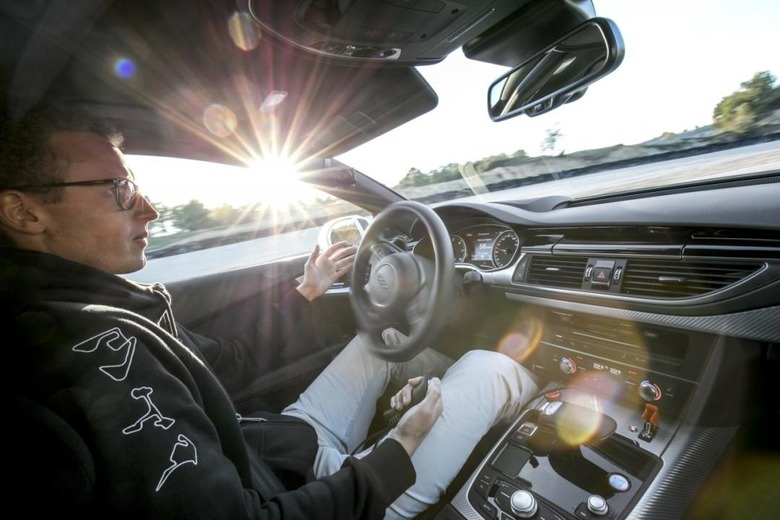
While Robby has his fancy GPS guidance system to help him determine the best lines through the track, I get to follow a pace car driven by a professional driver. If I can keep up with the pace car – easier said than done – I stand a shot at winning.
On of the straights, Robby's top speed was 209kph – that's roughly 129mph – so if I set it up right and brake late, I might hit it.
Nope, I should've braked later: I only hit 205 kph which is roughly 127.5mph. Just a few more feet and I could've matched him, but I guess robot drivers don't experience the same clenching sensation when a tight corner accelerates into view.
What else is new with Robby? Prior to setting him lose on the track, Audi engineers drove a few manual laps to capture a whole new set of pictures as the car whipped around the course. AJ, the car I raced against a year ago, would rely on a pair of cameras which snap a bunch of images and matches them up in real-time.
That has a couple of downsides. First off, it doesn't give AJ or Bobby the flexibility to modify their performance at top speed and, as a result, each lap is very much static. Secondly, processing all the images in real-time requires a vast amount of computing power, and those pesky computers add up.
So, between pulling out the back seats and shedding all of all the servers in the trunk, Robby's 880+ pound weight loss means the 560-horsepower 4.0 TFSI V8 biturbo engine in the RS7 doesn't have quite so much to push around the track.
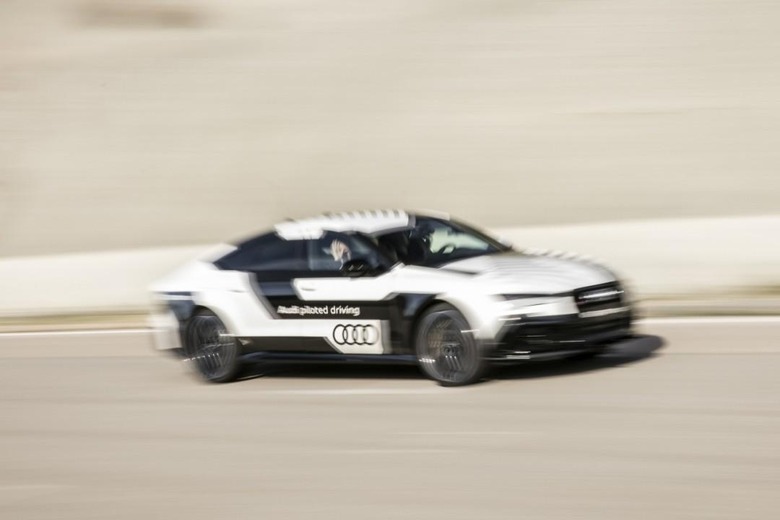
I could definitely feel the difference between AJ and Robby's performance. Granted, we're talking about two different courses, but they're still race tracks with plenty of twisty turns. Parcmotor Raceway even had a few elevation changes which Robby had no problem tackling. While I didn't get to ride AJ at the track, I'd imagine he'd struggle to achieve the same lap time.
He's not just a weekend racer, either. Prior to hitting FAST Parcmotor, Robby conquered Sonoma Raceway in California, where lawmakers and regulators from several states got the front-seat experience of just how well Robby can handle. While there, in fact, his lap times were better than those of several experienced sports car drivers.
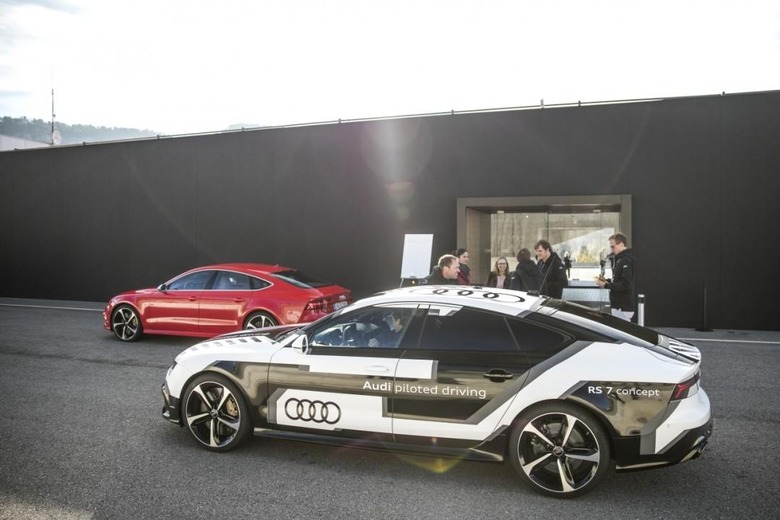
NOW READ: 2017 Audi Q7 e-tron quattro first-drive
Why go to all this trouble? It's simple: to show the world that Audi's leading in this race to safe self-driving cars and, obviously, to beat others to the punch. It's an impressive accomplishment for Audi. Robby not only is able to drive autonomously around a race track, he does it after learning the course after just two laps. Afterwards, he's able to map out the best racing lines through the turns, speed up, slow down, and totally own whatever track he's thrown into.
That's another big building block toward the future of autonomously driving cars, even if they're to be found in the suburbs not the chicanes.

